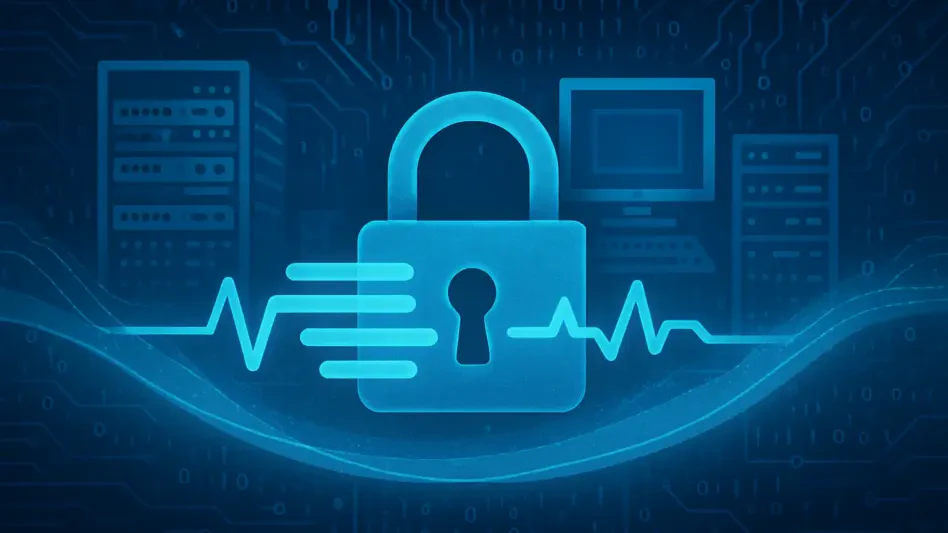What happens when the digital defenses of a nation’s most vital systems are left waiting for clearer rules? In an era where cyberattacks on critical infrastructure like power grids and hospitals spike at an alarming rate, the Cybersecurity and Infrastructure Security Agency (CISA) has hit pause on a pivotal cyber incident reporting mandate. This delay, affecting sectors that underpin daily life, raises urgent questions about preparedness in the face of escalating threats. With ransomware attacks alone costing billions annually, the stakes couldn’t be higher. This unfolding story dives into why this regulatory slowdown happened and what it means for the safety of essential services.
The Weight of Waiting: Why This Delay Hits Hard
At the heart of this issue lies a stark reality: critical infrastructure sectors—energy, healthcare, transportation—are the lifeblood of society, yet they remain prime targets for cybercriminals. CISA’s original plan to enforce rapid reporting of cyber incidents was designed to create a unified front against these dangers, enabling faster national responses. Delaying this rule, however, leaves a gap in coordinated defense at a time when attacks are not just frequent but increasingly sophisticated, often exploiting vulnerabilities in interconnected systems.
The importance of this story transcends mere policy updates. It’s about the potential ripple effects on public safety and economic stability. A single breach in a utility provider, for instance, could plunge entire regions into darkness or disrupt emergency medical services. With cyber threats evolving daily, understanding why CISA opted for caution over speed is crucial to grasping the broader challenges of securing the nation’s backbone.
Behind the Scenes: What Stalled the Cyber Reporting Rule
Digging into the reasons for CISA’s delay reveals a complex web of practical and strategic considerations. One major factor is the need to tailor regulations to the diverse realities of critical sectors. A hospital, for example, operates under vastly different constraints than a nuclear power plant, and a one-size-fits-all mandate risks creating unworkable burdens. CISA appears to be taking time to ensure the rules are both feasible and impactful across these varied landscapes.
Another hurdle lies in addressing the sophistication of modern cyber threats, such as advanced persistent threats that can lurk undetected for months. Crafting policies that counter these dangers without overwhelming industries—especially smaller entities with limited resources—requires meticulous calibration. Stakeholder feedback has highlighted concerns about compliance costs and operational strain, pushing CISA to rethink its approach.
A real-world example underscores the urgency of getting this right. Recent ransomware attacks on water treatment facilities have shown how quickly a breach can threaten public health. These incidents illustrate why the delay, while frustrating to some, may be a necessary step to build a framework that genuinely strengthens security rather than merely adding red tape.
Voices from the Field: Expert Take on CISA’s Caution
Insights from seasoned professionals shed light on the nuanced balance CISA must strike. Web Leslie, a cybersecurity advisor with deep roots in the Department of Homeland Security, brings a grounded perspective to the table. “Cybersecurity isn’t just about mandates—it’s about building real readiness,” Leslie notes. His decades of experience navigating public-private collaborations and responding to breaches across industries emphasize that rushed rules can do more harm than good if they fail to account for on-the-ground challenges.
Leslie’s work with frameworks like the NIST Cybersecurity Framework reveals a broader industry sentiment: delays can be beneficial if they allow for refining policies to match evolving risks. However, he cautions that this pause must be paired with active efforts to bolster defenses. Other experts echo this view, stressing that while regulatory clarity is vital, the ultimate goal is fostering resilience against threats like data breaches and insider attacks. This consensus points to a critical need for collaboration between government and industry during this interim period.
Sector Strategies: Staying Secure Amid Uncertainty
While CISA recalibrates its approach, critical infrastructure entities cannot afford to stand idle. One actionable step is to fortify incident response plans by identifying sector-specific weak points, such as vulnerabilities in supply chain networks. For instance, a transportation hub might focus on securing third-party software integrations that could serve as entry points for attackers. This proactive mapping can mean the difference between containment and catastrophe.
Beyond planning, investing in workforce training offers another layer of defense, particularly against insider threats—a growing concern as employees unintentionally or maliciously expose systems. Regular drills and updated protocols can sharpen readiness, ensuring staff are equipped to spot and stop risks early. These efforts, though resource-intensive, build a culture of vigilance that pays off in crisis moments.
Lastly, aligning with existing standards like NIST provides a head start on compliance, even before new rules are finalized. Organizations that adopt these frameworks now can position themselves to adapt seamlessly when mandates arrive. This forward-thinking approach not only mitigates current risks but also signals to regulators and partners a commitment to robust security practices, fostering trust across sectors.
Reflecting on the Road Ahead
Looking back, the hesitation by CISA to roll out the cyber incident reporting rule for critical infrastructure sparked intense debate about timing versus necessity. The balance between crafting effective policies and responding to immediate threats proved to be a tightrope walk, with real-world implications for public safety. Each sector faced unique pressures, yet the shared need for stronger digital defenses remained undeniable.
Moving forward, critical infrastructure entities must prioritize building internal resilience through targeted strategies and partnerships. Collaboration with government bodies like CISA will be key to shaping rules that work in practice, not just on paper. As cyber threats continue to evolve, staying ahead demands not just compliance, but a relentless focus on innovation and adaptability to safeguard the systems society depends on most.








